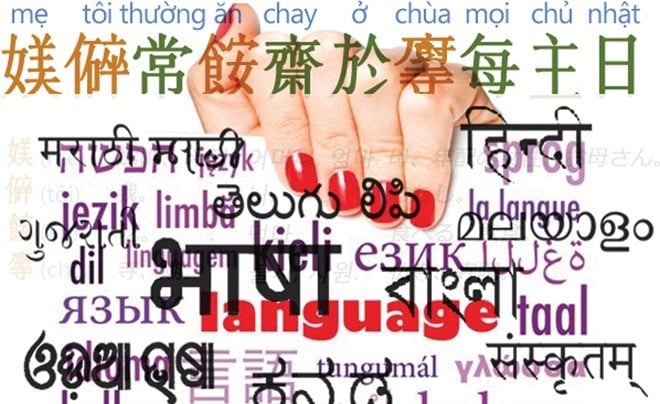

The Standing Committee of National Assembly on Information, Broadcasting and National Heritage has recently rekindled a forlorn hope. In a recently held meeting, the committee adopted a resolution to declare 13 mother languages of Pakistan as national languages and establishing a Languages Commission for scientific research and policy formulation to promote Pakistani languages.
In Pakistan, the seeds of discontent were sown right from its inception when Bengalis asserted for their language to be the national language along with Urdu. Denial of that sparked a nationalist movement that culminated in a debacle in 1971. The threat of Indian aggression coupled by a flippant attitude of the ruling elite at a formative stage resulted in a denial of historic cultures and identities of the federating units.
Islam and Urdu were construed as cementing factors for the culturally-diverse and politically-discrete federating units. Intentions and reasons apart, the approach was too bitter particularly for Sindh and Bengal where native languages were highly advanced and remained official languages for decades.
Language movements in Bengal and Sindh subsequently resulted in parturition of nationalist movements in both provinces.
Recognition and respect for historic identities and cultural inheritance is pivotal for a federation. Founders of Pakistan attempted to mould it into a nation state which was an unnatural and flawed approach. Religion and imposed cultures have never succeeded in unifying people, especially when some of them are discriminated on the basis of their identities. Had there been a fair representation in the state affairs e.g. civil and military bureaucracy, other elements could probably have endured or subsided with time. When cultural identity is made the basis of political and economic oppression, it erupts like a volcano.
At the time of partition, both Bengali and Sindhi were official languages in their respective provinces. Both languages had a cherished history and a treasure trove of literature. Both languages were not only lingua franca of their provinces but were also in vogue for revenue, court, education and other official business.
The first Bengali dictionary/grammar was written by a Portuguese missionary between 1734 and 1742. Nathaniel Brassey Halhed, a British grammarian, wrote a modern Bengali grammar in 1778. Ram Mohan Roy, the great Bengali reformer also wrote "Grammar of the Bengali Language" in 1832.
In 1937 at the Lucknow session of the Muslim League, the Bengalis objected to Urdu becoming the lingua franca of all Indian Muslims. In 1947 when Dr Ziauddin Ahmad, Vice-Chancellor of the Muslim University of Aligarh, declared that Urdu would be the national language of Pakistan, Bengali linguist Dr Shahidullah replied that this ‘would be tantamount to political slavery’. The controversy intensified after the creation of Pakistan.
On February 25, 1948, Mr Datta, a Congress Leader, claimed on the floor of the National Assembly of Pakistan that out of 69 million people, 44 million speak Bengali in the country, therefore, Bengali, along with English and Urdu, should be accepted as a language of the Assembly.
Muhammad Ali Jinnah, during his visit to Bengal in March 1948, took pains to persuade Bengalis for embracing Urdu as the only national language but he could not crack the relentless obstinacy. A macabre episode of 1952 caste the dye and Bengali language movement turned into a fireball of Bengali nationalism, ultimately dismembering the country.
Similarly, Sindhi language owned a rich legacy. Sindh was occupied by British army in 1843 and was annexed with Bombay. In 1848, governor of the province Sir George Clerk ordered to make Sindhi the official language in the province. Sir Bartle Frere, the then commissioner of Sindh, issued orders on August 29, 1857 advising civil servants in Sindh to qualify examination in Sindhi. He also ordered Sindhi to be used in all official communication. Seven-grade education system commonly known as Sindhi-Final was introduced in Sindh. Sindhi Final was made a prerequisite for employment in revenue, police and education departments.
In 1854, Arabic script was adopted for Sindhi language. In 1848 and 1855, English-Sindhi dictionaries were produced. Eminent German scholar Ernest Trump published Sindhi grammar in 1872. Karachi at the time of partition had a population of 0.4million with 61 per cent Sindhi-speaking compared to only 6 per cent Urdu-speaking population.
With influx from India and exodus of Hindus, Sindh underwent a demographic shift. In 1951, the same city had 57 per cent Urdu-speaking population and Sindhis shrunk to a mere 8.6 per cent. At the time of partition, Karachi had 1300 Sindhi medium schools which were subsequently converted into a no-go area for Sindhi language.
President Ayub constituted a Commission on National Educational also known as Sharif Commission, which declared Urdu as the only medium of instruction from the sixth grade. Sindhis took this decision as an affront and launched a movement against the recommendations of the Commission. Language riots of 1971 and 1972 created an ethnic crevasse in Sindh which was further widened by ethnic strife in 80s and 90s.
Sindhi Adabai Sangat (SAS), a prominent literary and cultural organisation of Sindh, had been tirelessly championing the cause of Sindhi language. SAS dispatched 100,000 postcards to the president of Pakistan in 2009 demanding the status of national language for major languages of Pakistan. Sindhi Language Authority also presented a separate memorandum of the same demand to the government.
In 2010, leading literary organisations from all four provinces and Progressive Writers Association of Pakistan presented the same memorandum to the parliamentarians. In 2010, two members of parliament from Sindh presented two separate bills before the National Assembly, demanding major languages of Pakistan to be declared national languages. These bills were rejected without any plausible explanation.
An anachronistic pretext of threat to national integrity is too stale to subscribe to. Had the single language guaranteed national integrity, East Pakistan would not have seceded.